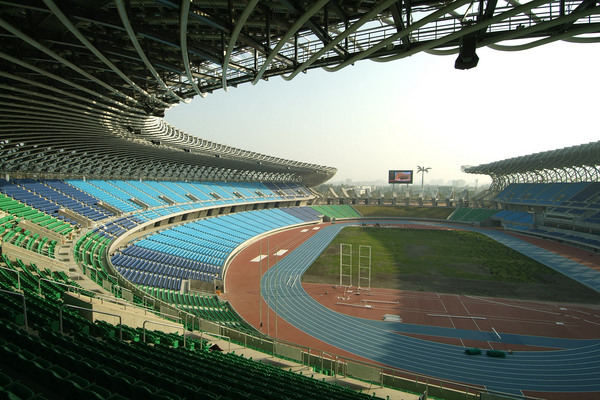
Going green and promoting sustainability is one of the top priorities in today’s world. When we talk about interiors and architecture, architects and interior designers from all around the world are designing highly engineered structures that combine various sustainable features. The new inventions haven’t spared the sports stadiums as well. Lately, we have witnessed eco-friendly sports stadiums being designed in various cities in the world. The solar powered sports stadiums are perfect example of going green. Further in this post you will read about the five best solar powered sports stadium in the world.
Dragon Stadium, Taiwan

This futuristic looking sports stadium has the honor of being the first stadium in the world to produce its own electricity. Dragon Stadium uses the power of the sun and provides itself with enough electricity supply. The stadium is designed in horse shoe-shaped and is located in Kaohsiung, Taiwan. This stadium has been built for the World Games and is the first sports stadium to use only solar power technology. This huge 19 hectare structure boosts a seating capacity of 55,000 viewers and will be used specially for rugby events and athletics. The innovative steel rod structure for the roof, which sports the solar panels, has been designed by a Japanese architect Toyo. The unusual semi-spiral shape takes its inspiration from a dragon.
Stade de Suisse, Switzwerland
The Stade de Suisse was earlier known as the Wankdorf Stadium, and is located in Bern, Switzerland. This brand new, hi-tech stadium has a seating capacity of 32,000 viewers to enjoy fantastic football and outdoor ice hockey! The old Wankdorf Stadium was replaced by the modern Stade de Suisse in the year 2005, and the earlier stadium was demolished in the year 2001. The state of art stadium has installed 7,930 solar modules and produces 1,346.774 kWp electricity. The stadium has been honored with both the European and Swiss Solar Awards for the integration of the photovoltaic plant.
AT&T Park, California
AT&T Park is one of the most popular ballparks located in California and serves as the home to the major league baseball giants in San Francisco. Originally it was known as Pacific Bell Park, with a seating capacity of 42,000 viewers. However, in the final design major modifications were done, and with an expenditure of more than $357 million, the multi-use stadium was constructed. The revamped stadium was reopened in March 31, 2000, and was the only Major League ballpark that was constructed without public funds. The stadium was opened with a seating capacity of 40,800 viewers; however it has been increased with passing years. The stadium sports 68 luxury suites, 1,500 club seats at the field level and 5,200 club seats at the club level.
Easy Credit Stadium, Nuremberg

Easy Credit Stadium was one of the most important venues in Nuremberg for the Football World Cup 2006. It is located in Volkspark Dutzendteic and boosts a history of 80 years. Earlier, it was a municipal stadium that was completed in the year 1928, and boasted some exceptional architectural features. The stadium area with its surrounding area was awarded a gold medal for its artistic design. Easy Credit Stadium was equipped with a solar power system in the year 2006. The solar system was installed on the roof of the stadium and provides 140 kWh of electricity every year. The stadium has the seating capacity of 48,500. Few of the facilities available at the stadium are changing rooms for coaches, players, and referees. It also has a physician and treatment room. A 300 sq m press area is used for press conferences, which 1200 sq m area is reserved as a VIP area and sports rooms for almost 800 guests.
Fenway Park, Boston

Fenway Park is one of the most popular baseball parks in the world. It is locate in Boston. It is also known as a home ballpark to the world renowned Boston Red Sox baseball club. It is one of the oldest Major League Baseball stadiums that are currently in use. This stadium was opened in the year 1912, and has received several makeovers. The latest makeover took place in the year 2008, which led to the installation of the solar panels on the roof of the stadium. The electricity produced by these solar panels provides more than 37 per cent of the stadium’s hot water. The stadium was constructed with a cost of almost US $650,000. The seating capacity of the stadium for the day events is 37,000, while for the night event is 37,500.
Source: ecofriend

 Follow
Follow